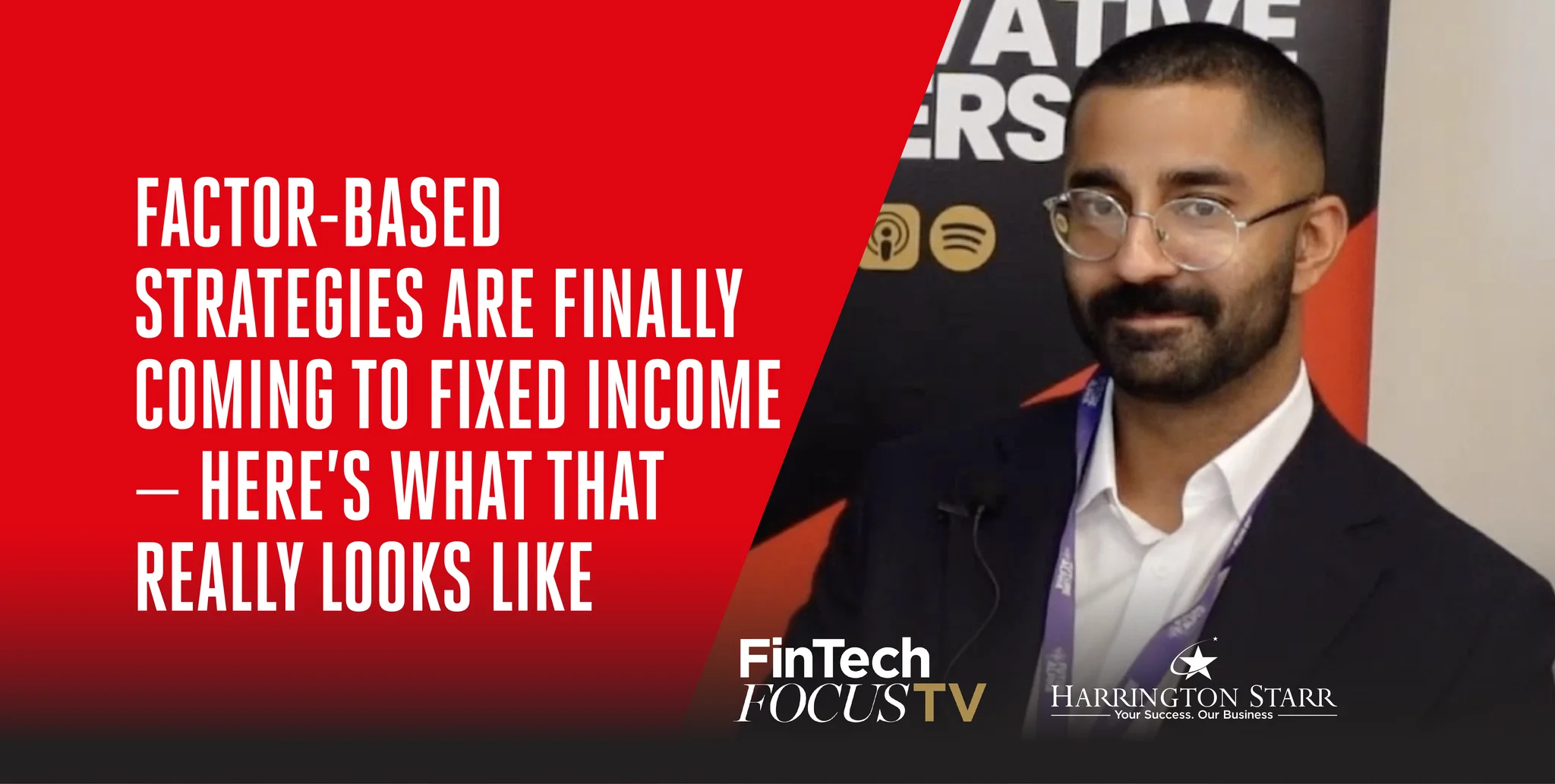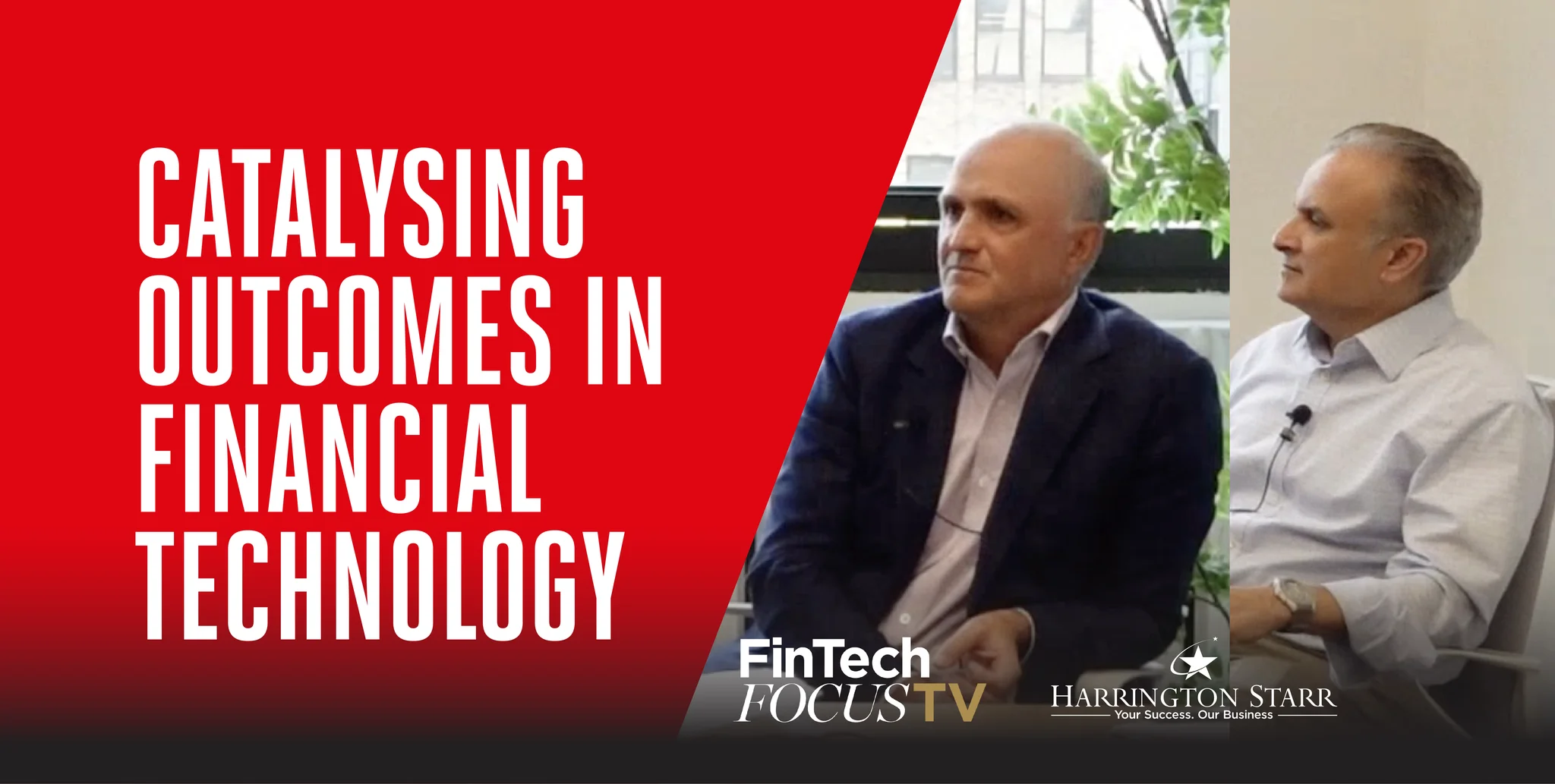Uniting Data, Driving Transparency
The financial services industry is standing at the edge of significant structural change. In this pivotal episode of FinTech Focus TV, Toby is joined by Neil Ryan, CEO-Designate of Bondtape, and Oliver Haste, Chief Administrative Officer-Designate at Bondtape, for a deep dive into the transformative journey of the consolidated tape. As global regulators sharpen their focus on data transparency, execution quality, and market integrity, the emergence of Bondtape reflects not just a technical solution but a vision for collaborative, high-quality market infrastructure.
In a conversation filled with practical insight, regulatory foresight, and technical depth, this episode is essential viewing for anyone working in or around capital markets, regulatory technology, or financial data architecture. At the heart of this project lies a simple ambition with significant complexity: to build a consolidated tape for the bond markets in the UK and the EU that is not only functional, but also effective from day one.
The Consolidated Tape: From Industry Aspiration to Urgent Priority
As Toby opens the discussion, it is evident that the topic of the consolidated tape has moved from theoretical debate to regulatory imperative. Having previously been considered a slow-moving regulatory project, the need for a unified view of post-trade data in fixed income has rapidly escalated in urgency. According to Neil Ryan, this shift resembles “a slow train turning into a bullet train”, and it’s now at the very top of the regulatory and industry agenda.
With bond market data scattered across numerous trading venues and formats, the lack of a standardised, centralised repository has resulted in fragmented liquidity, inefficiencies in pricing, and a general opacity that disadvantages both institutional and retail participants. The consolidated tape is therefore not just a regulatory initiative—it’s a market-wide opportunity to improve transparency, reduce friction, and empower innovation.
Bondtape: The Product of Two Market Leaders Aligning
Bondtape is the result of an industry-first collaboration between FINBOURNE and Propellant Digital. Both companies bring complementary capabilities to the table: FINBOURNE’s enterprise-scale data management systems and infrastructure are well-proven with global clients, while Propellant Digital is widely regarded for its market-leading expertise in post-trade bond data and regulatory compliance.
Neil explains how FINBOURNE, already serving the likes of Northern Trust and the London Stock Exchange Group (LSEG), began examining the feasibility of building a consolidated tape about four years ago. At the same time, Oliver and the team at Propellant were creating what they now describe as a “proto-CTP”—a live, production-level service offering real-time bond market data to a range of paying clients.
The union between FINBOURNE and Propellant emerged from a shared ethos around data quality, market transparency, and regulatory integrity. According to Oliver, this wasn’t merely a business merger; it was the convergence of two firms that had already spent years working on aligned goals. The result was Bondtape—a joint venture with the express purpose of bidding for and, if successful, delivering the consolidated tape for both the UK and the EU.
Technology, Governance and Regulatory Readiness: Meeting the Criteria for Delivery
One of the most discussed topics in the episode is the challenge of meeting the regulatory and technical benchmarks required by the Financial Conduct Authority (FCA) and the European Securities and Markets Authority (ESMA). Both regulators are running tender processes for separate but parallel consolidated tape mandates. Though the two processes differ slightly, the core requirements are remarkably similar—demonstrated technical capacity, a robust understanding of regulatory obligations, and the ability to execute at pace.
Neil outlines how Bondtape’s architecture is being designed with all these requirements in mind. Importantly, beyond the bid submission and evaluation process, any successful candidate must also become an authorised and regulated institution—an often-overlooked but vital component of delivery. Here, the depth of institutional experience within both companies becomes a strategic advantage. Having operated under regulated frameworks, the Bondtape leadership team brings credibility and assurance that goes well beyond technical prowess.
Oliver reinforces the point by highlighting their commitment to DORA (Digital Operational Resilience Act) compliance, ISO standards, and best-in-class security practices. Given the sensitive nature of market data, ensuring resilience and data protection is non-negotiable. The team is also acutely aware of the need to serve a diverse user base—from high-frequency traders to retail investors—so user interface, data clarity, and accessibility are equally prioritised.
Solving Fragmentation: Why the Market Needs Consolidated Bond Data
The fixed income market has long been underserved by data infrastructure compared to equities. Unlike the equity space, where data is commoditised and easily accessible, the bond market operates with significant fragmentation. As Oliver points out, there’s currently no European equivalent to the US TRACE system, which has been a cornerstone of fixed income transparency for over two decades.
The lack of a central post-trade data source leads to suboptimal pricing, inefficient execution, and a limited view of liquidity. For many market participants, particularly those on the buy-side or outside of large dealer networks, the only way to assess pricing is via a patchwork of requests for quotes (RFQs) and historical data.
The introduction of a consolidated tape has the potential to radically change this landscape. With one centralised data feed, users will gain a near real-time view of bond market activity across multiple venues. This not only enhances market efficiency but also supports broader financial inclusion. Retail investors, often excluded from bond markets due to lack of transparency, would finally be able to access meaningful data for investment decisions.
Regulatory Aims: Unlocking Capital and Supporting Policy Formation
An important point made during the episode is that consolidated tape is not just a market utility—it’s also a policy tool. Neil and Oliver both highlight how European policymakers view the consolidated tape as a key enabler in shifting over €1 trillion from low-yield savings into productive investments.
By creating transparency, the regulators hope to build trust and confidence in the bond market. This, in turn, supports the goals of the Capital Markets Union and the Savings and Investment Union by making capital markets more accessible, particularly to retail investors.
Moreover, a high-quality consolidated tape will provide regulators with the raw data needed to develop evidence-based policy. By observing market behaviour in real time, supervisory bodies can better assess market conduct, monitor for systemic risks, and ensure the fair functioning of financial markets.
Building for the Future: FinTech, APIs, and Data Innovation
Looking beyond the initial implementation, Neil and Oliver are clear that Bondtape’s value lies not only in what it will provide but in what it will enable. The tape is being built with modern APIs and cloud infrastructure—specifically, in partnership with AWS—to allow for scalability, interoperability, and innovation.
One of the most exciting elements discussed is how Bondtape could serve as a launchpad for new FinTech and RegTech solutions. With access to clean, structured data, startups and established firms alike can build indices, analytical platforms, trade cost analysis tools, and alternative data models.
The commitment to open APIs and transparency ensures that even small companies can participate in the emerging ecosystem, levelling the playing field and fostering genuine innovation. Neil goes one step further, saying that Bondtape is not interested in offering value-added services that might confuse the market. Instead, its focus is purely on delivering the tape—clean, accurate, and fit for use—so others can build on top of it.
The Design Council: Industry Collaboration in Action
True to their collaborative ethos, Bondtape has launched a Design Council—an open membership initiative inviting contributors, users, and industry experts to provide feedback, challenge assumptions, and shape the direction of the project. This ensures that the product being developed is grounded in real-world needs and stakeholder priorities.
The Council includes representatives from trading venues, APAs (Approved Publication Arrangements), and data users. This diversity is intentional. As Neil says, collaboration means more than engagement—it means working together to improve, not merely informing.
Participation in the Design Council is non-committal and open. Interested parties can join via Bondtape’s website or by reaching out via LinkedIn or email. It’s a strong message to the market: Bondtape doesn’t just want to be a vendor; it wants to be a partner.
Preparing for the Future: What Comes Next for Bondtape?
If Bondtape is selected to deliver either or both consolidated tapes, the real work begins in earnest. According to Oliver, a sprint will follow completing the infrastructure, engaging contributors, finalising regulatory authorisation, and initiating the sales and licensing process. A tentative go-live date is expected within Q1 of the following year.
An essential element of this next phase is the industry-wide readiness. Not only must Bondtape be prepared to launch, but data contributors—venues, APAs—and users must also be ready to connect and consume. The challenge is further complicated by the overhaul of the deferral regime, which will significantly increase the proportion of trades published in real-time. Oliver notes that current figures stand at just 15% of trades being published instantly; with reforms, that number could rise to over 50% in terms of volume and even higher in terms of count.
This transformation in data availability dramatically increases the value of the tape, while simultaneously raising the stakes for its accuracy and usability.
Conclusion: A New Chapter for Fixed Income, Powered by Collaboration
This episode of FinTech Focus TV delivers a clear and compelling narrative around the need for a consolidated tape in the bond markets and the unique opportunity Bondtape represents. For Harrington Starr, a FinTech recruitment firm deeply embedded in this sector, it's a timely reminder of the kinds of innovation, leadership, and collaboration that are shaping the future of finance.
Bondtape isn’t just a technical solution—it’s a catalyst for market evolution. Built on deep expertise, robust technology, and a commitment to transparency, it represents the best of what FinTech can achieve when collaboration leads the way.
Harrington Starr is a leading FinTech recruitment firm, renowned for its specialist focus on financial services and technology talent. With over a decade of industry expertise, the company connects top-tier candidates with pioneering firms across capital markets, banking, trading, payments, and the wider FinTech ecosystem. Harrington Starr plays a critical role in supporting innovation by placing professionals in roles that power digital transformation, regulatory change, and data-driven disruption across global financial markets. Their consultative approach, deep sector knowledge, and robust industry network make them a trusted partner for firms navigating the fast-evolving FinTech landscape.






